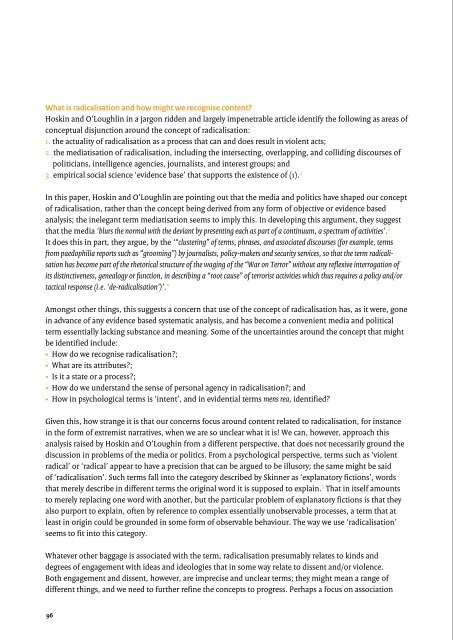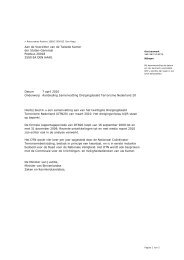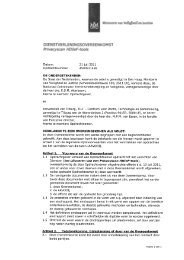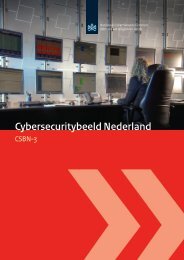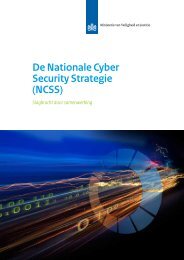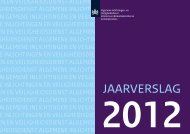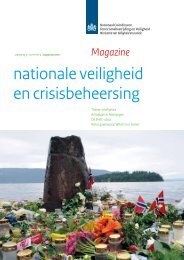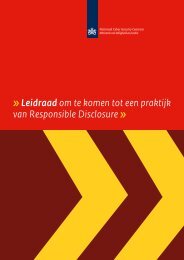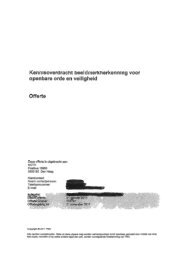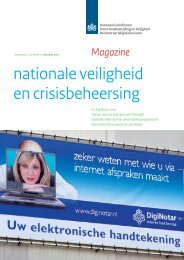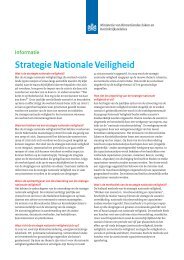Countering Violent Extremist Narratives
Countering Violent Extremist Narratives
Countering Violent Extremist Narratives
- No tags were found...
You also want an ePaper? Increase the reach of your titles
YUMPU automatically turns print PDFs into web optimized ePapers that Google loves.
What is radicalisation and how might we recognise content?Hoskin and O’Loughlin in a jargon ridden and largely impenetrable article identify the following as areas ofconceptual disjunction around the concept of radicalisation:1. the actuality of radicalisation as a process that can and does result in violent acts;2. the mediatisation of radicalisation, including the intersecting, overlapping, and colliding discourses ofpoliticians, intelligence agencies, journalists, and interest groups; and3. empirical social science ‘evidence base’ that supports the existence of (1). 2In this paper, Hoskin and O’Loughlin are pointing out that the media and politics have shaped our conceptof radicalisation, rather than the concept being derived from any form of objective or evidence basedanalysis; the inelegant term mediatisation seems to imply this. In developing this argument, they suggestthat the media ‘blurs the normal with the deviant by presenting each as part of a continuum, a spectrum of activities’. 3It does this in part, they argue, by the ‘“clustering” of terms, phrases, and associated discourses (for example, termsfrom paedophilia reports such as “grooming”) by journalists, policy-makers and security services, so that the term radicalisationhas become part of the rhetorical structure of the waging of the “War on Terror” without any reflexive interrogation ofits distinctiveness, genealogy or function, in describing a “root cause” of terrorist activities which thus requires a policy and/ortactical response (i.e. ‘de-radicalisation’)’. 4Amongst other things, this suggests a concern that use of the concept of radicalisation has, as it were, gonein advance of any evidence based systematic analysis, and has become a convenient media and politicalterm essentially lacking substance and meaning. Some of the uncertainties around the concept that mightbe identified include:• How do we recognise radicalisation?;• What are its attributes?;• Is it a state or a process?;• How do we understand the sense of personal agency in radicalisation?; and• How in psychological terms is ‘intent’, and in evidential terms mens rea, identified?Given this, how strange it is that our concerns focus around content related to radicalisation, for instancein the form of extremist narratives, when we are so unclear what it is! We can, however, approach thisanalysis raised by Hoskin and O’Loughin from a different perspective, that does not necessarily ground thediscussion in problems of the media or politics. From a psychological perspective, terms such as ‘violentradical’ or ‘radical’ appear to have a precision that can be argued to be illusory; the same might be saidof ‘radicalisation’. Such terms fall into the category described by Skinner as ‘explanatory fictions’, wordsthat merely describe in different terms the original word it is supposed to explain. 5 That in itself amountsto merely replacing one word with another, but the particular problem of explanatory fictions is that theyalso purport to explain, often by reference to complex essentially unobservable processes, a term that atleast in origin could be grounded in some form of observable behaviour. The way we use ‘radicalisation’seems to fit into this category.Whatever other baggage is associated with the term, radicalisation presumably relates to kinds anddegrees of engagement with ideas and ideologies that in some way relate to dissent and/or violence.Both engagement and dissent, however, are imprecise and unclear terms; they might mean a range ofdifferent things, and we need to further refine the concepts to progress. Perhaps a focus on associationwith behaviour such as violence, or some identifiable propagation of violence, is a way to progress thisfurther; otherwise what we are left with refers to ‘a state of mind’ and ‘propensities’ that lacks the capacityfor any kind of verification.But herein lies the challenge. When we see an item of terrorist related content on the Internet or in a book(even though we may be uncertain precisely what its attributes might be), it is very unlikely that we canknow with any certainty that the person responsible for its distribution is a terrorist, an agent of theState, or a madman. We certainly cannot assume there is any sense of their being, by either reader or thedistributer, a direct involvement in terrorist violence. Even if there is, we are not automatically warrantedin making any immediate assumptions about the role of the material in question in leading to oraggravating further instances of terrorist violence, or protecting against violence.In fact, the notion of publicly accessible content being problematic simply because ‘terrorists’ are behind itis somewhat absurd. If content is problematic in some sense, then it is presumably problematic as content,regardless of what we know about its author; but this presents a paradox. Without arriving at some kindof idea of ‘terrorist content’ as a self-contained category of problematic – which is not to say necessarilyillegal – material, we cannot satisfactorily talk about ‘terrorist’ phenomena being caused by content; orat least, we cannot do so based on the study of that content alone. On the other hand, if we talk about‘terrorist’ material we are presenting what is in a sense an oxymoron. By itself, no material is inherently‘terrorist’ at any rate, in a problematic sense when understood as being related to expression of violence.One way around this problem is to simply ignore all instances of material that are not demonstrablyrelated to a particular case of politically violent activity (which of course begs the question of how wemight know). But before we arrive at that point, there is reason for thinking that it may nonetheless beworth trying to rescue some kind of idea of content as ‘terroristic’ in its own right. Firstly, whether we likeit or not, the idea of the importance of ‘terrorist’ or, more generally, ‘violent radical’ material has cast along shadow. Items such as websites of terrorist groups, videos of terrorist operations, ideological andpolemic books, etc. seen as justifying terrorism and disseminated principally by the Internet are muchtalked about. To simply ignore all such items in a spirit of radical scepticism risks accusations of sidesteppinga core issue.There is, however, a more serious reason for wanting to find a way of incorporating ideological contentinto discussions of terrorism. This is the fact that, unlike most other types of law-enforcement activity,counterterrorism has the unusual property of being necessarily and primarily pre-emptive. Unlikeburglaries or even homicides, instances of terrorism are rare in most places, but have a very high publicimpact. This means that simply looking at the (relatively few) people who have been responsible for acts ofterrorism and about whose activities adequate information exists, could be seen as rather limited. Surely,it might be argued, there is a need to look at items such as the vast wealth of potentially ‘terrorist’ materialon the Internet with a view to determining where and from whom the terrorism is likely to come next?In other words, there is a need to be able to ask the question ‘is there a relationship between thepropagation of content “x” primarily but not necessarily exclusively on the Internet, and terrorism?’And yet, remarkably, because of the so far almost complete failure to engage seriously with questions ofwhat makes ‘terrorist’ content ‘terrorist’, we are not only not in a position to answer such a question: We are actually96 97


